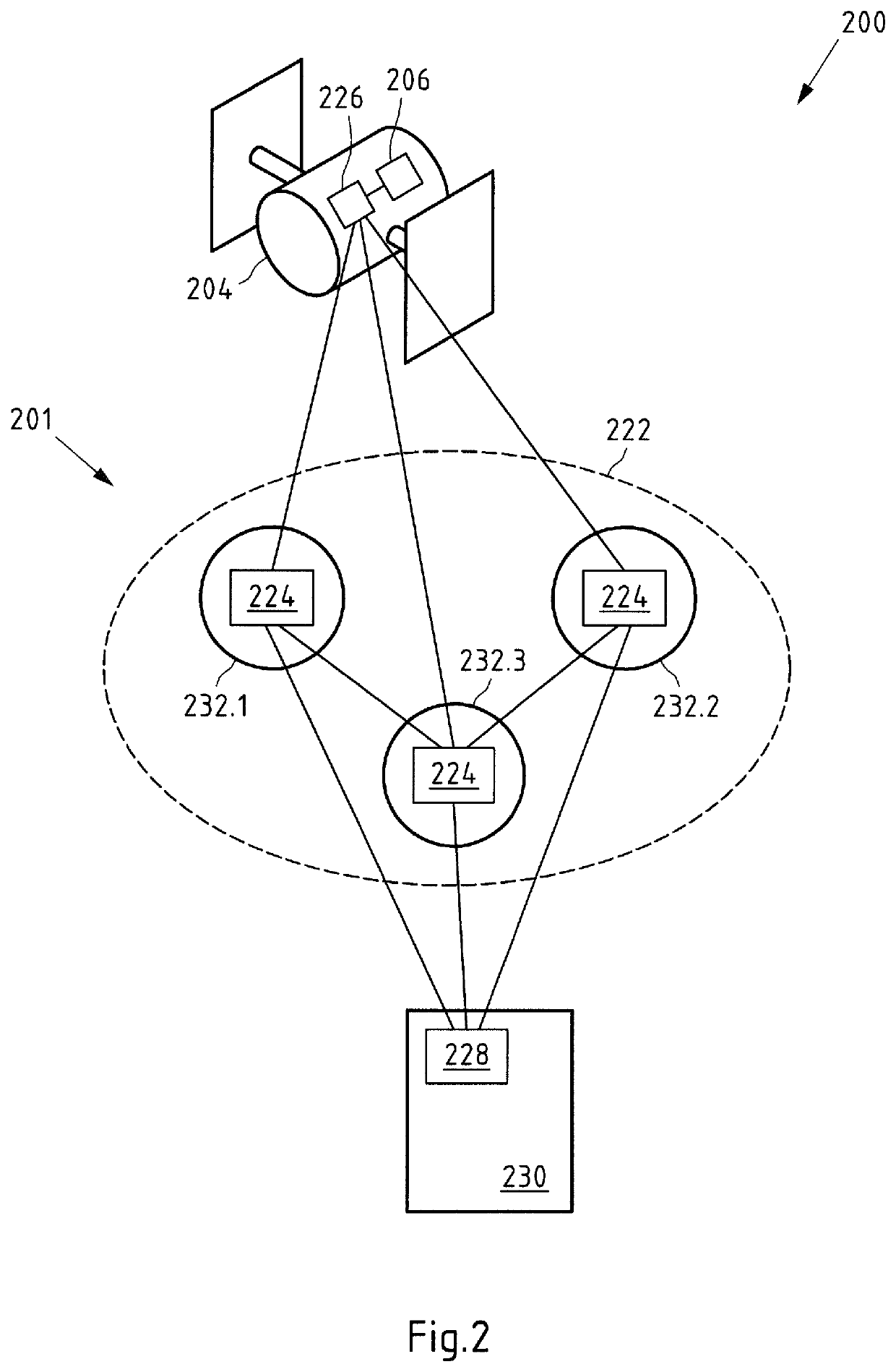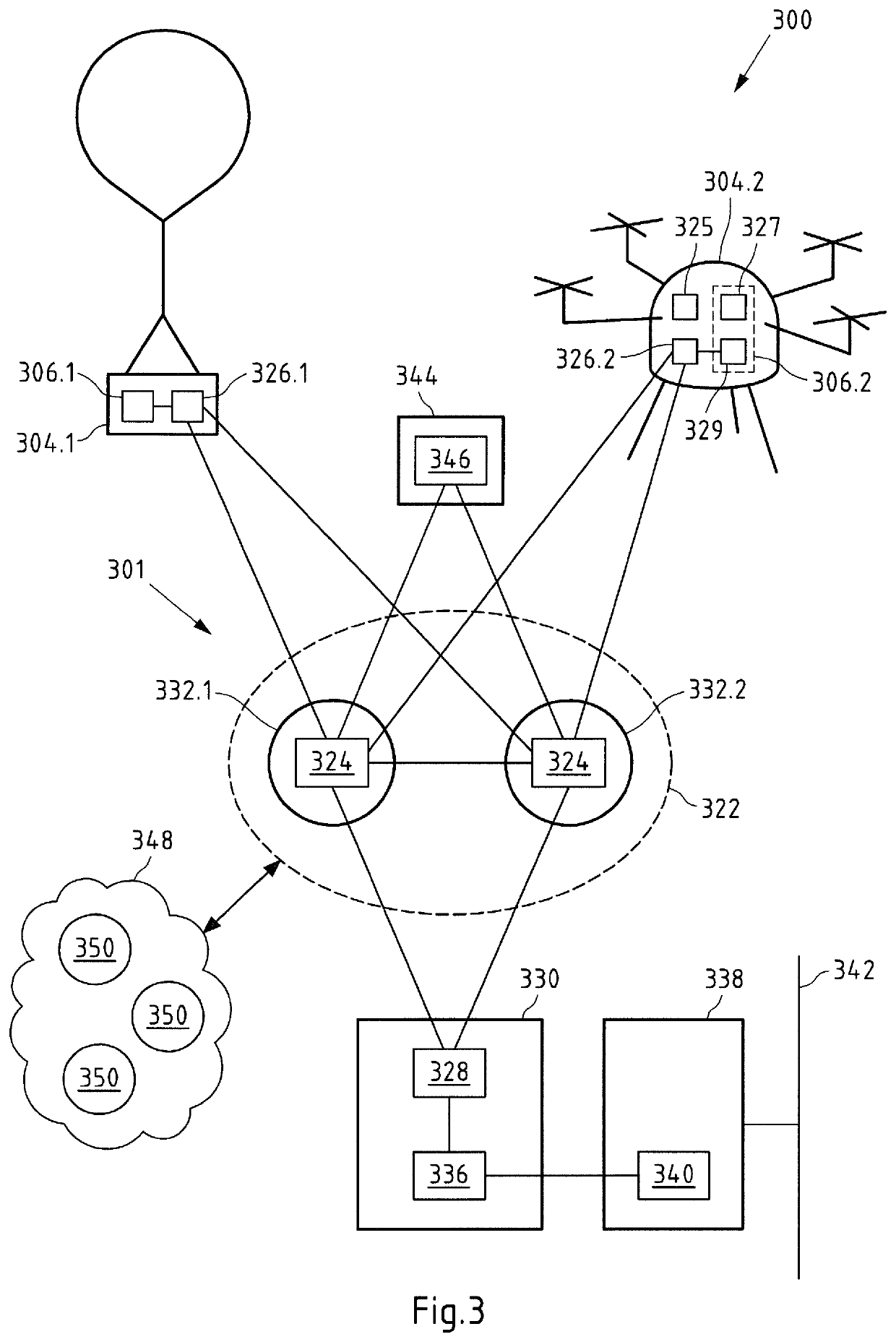Observation system
a technology of observation system and observation system, applied in the field of observation system, can solve the problems of high degree of security expenditure, server-client structure of these systems, and the management of confidential data by instance or central server
- Summary
- Abstract
- Description
- Claims
- Application Information
AI Technical Summary
Benefits of technology
Problems solved by technology
Method used
Image
Examples
Embodiment Construction
[0127]Like reference numerals in different figures indicate like elements.
[0128]FIG. 2 shows a schematic view of an embodiment of an observation system 200 according to the present invention, wherein the observation system 200 comprises an access control arrangement 201. The depicted observation system 200 comprises an observation device 204 in form of an observation satellite 204. For instance, the observation device 204 may be a weather observation device 204 configured to observe the weather. In order to observe the weather by e.g. monitoring one or more meteorological parameter(s) the observation device 204 may comprise an observation unit 206 with one or more sensor(s) and / or one or more instrument(s). For instance, visual sensors(s) and / or other sensor(s) for detecting electromagnetic waves can be implemented. It shall be understood that an observation system may comprise two or more (different) observation devices.
[0129]A substantial difference compared with prior art observa...
PUM
 Login to View More
Login to View More Abstract
Description
Claims
Application Information
 Login to View More
Login to View More - R&D
- Intellectual Property
- Life Sciences
- Materials
- Tech Scout
- Unparalleled Data Quality
- Higher Quality Content
- 60% Fewer Hallucinations
Browse by: Latest US Patents, China's latest patents, Technical Efficacy Thesaurus, Application Domain, Technology Topic, Popular Technical Reports.
© 2025 PatSnap. All rights reserved.Legal|Privacy policy|Modern Slavery Act Transparency Statement|Sitemap|About US| Contact US: help@patsnap.com



